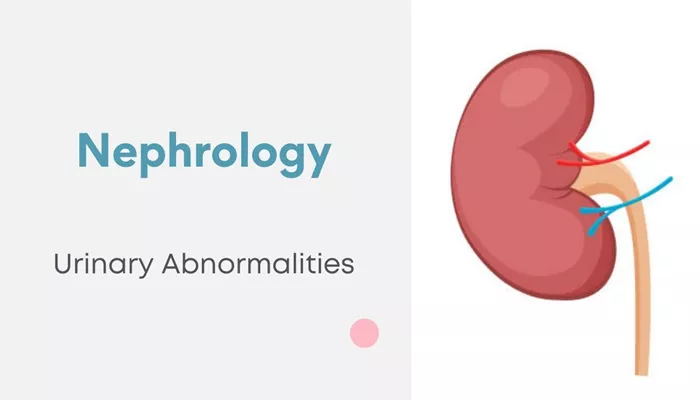Nephrotic syndrome is a clinical condition characterized by a combination of significant proteinuria, hypoalbuminemia, edema, and hyperlipidemia. This syndrome can result from various underlying kidney diseases that damage the glomeruli, which are the filtering units of the kidney. The connection between nephrotic syndrome and hyperlipidemia is a critical aspect of the disease’s pathophysiology and management. This article delves into how nephrotic syndrome leads to hyperlipidemia, exploring the mechanisms, implications, and treatment approaches.
What Is Nephrotic Syndrome?
Nephrotic syndrome is a kidney disorder that results from damage to the glomeruli, leading to the leakage of large amounts of protein into the urine (proteinuria). The main features of nephrotic syndrome include:
Proteinuria: Excessive amounts of protein in the urine.
Hypoalbuminemia: Low levels of albumin in the blood.
Hyperlipidemia: Elevated levels of lipids (fats) in the blood.
SEE ALSO: The 5 Best Causes of Stroke Caused by Hyperlipidemia
Causes of Nephrotic Syndrome
Nephrotic syndrome can be primary (idiopathic) or secondary to other conditions. Primary causes include minimal change disease, focal segmental glomerulosclerosis, and membranous nephropathy. Secondary causes involve systemic diseases such as diabetes mellitus, lupus erythematosus, and infections like hepatitis and HIV.
Pathophysiology of Nephrotic Syndrome Leading to Hyperlipidemia
Hyperlipidemia in nephrotic syndrome is a result of complex metabolic disturbances. The following mechanisms explain how nephrotic syndrome leads to elevated lipid levels in the blood:
1. Hypoalbuminemia and Compensatory Synthesis of Lipoproteins
The hallmark of nephrotic syndrome is significant protein loss through urine. As the body loses albumin, the liver ramps up the production of proteins to compensate, including lipoproteins, which are carriers of lipids in the blood. This compensatory increase in lipoprotein synthesis leads to elevated levels of various lipids, including cholesterol and triglycerides.
2. Increased Hepatic Lipoprotein Synthesis
The liver responds to hypoalbuminemia by increasing the synthesis of apolipoproteins and lipoproteins. Apolipoprotein B (ApoB), a major component of low-density lipoprotein (LDL) and very-low-density lipoprotein (VLDL), is synthesized in larger quantities, contributing to the elevated levels of LDL and VLDL cholesterol.
3. Decreased Lipoprotein Catabolism
In nephrotic syndrome, there is a reduction in the activity of lipoprotein lipase and hepatic lipase, enzymes responsible for the breakdown of lipoproteins. This decreased catabolic activity results in prolonged circulation of lipoproteins in the blood, further contributing to hyperlipidemia.
4. Altered Lipid Metabolism
Nephrotic syndrome disrupts the normal metabolism of lipids. The increased synthesis and decreased clearance of lipoproteins create an imbalance that favors the accumulation of lipids in the bloodstream.
Additionally, there is an increase in the synthesis of cholesterol and triglycerides by the liver.
5. Impaired Clearance of Chylomicrons and VLDL
The clearance of chylomicrons and VLDL is impaired in nephrotic syndrome due to decreased activity of lipoprotein lipase.
This enzyme is crucial for the breakdown and removal of these lipoproteins from the bloodstream. The impaired clearance results in elevated levels of triglycerides and cholesterol.
Clinical Implications of Hyperlipidemia in Nephrotic Syndrome
Hyperlipidemia in nephrotic syndrome is not just a laboratory finding; it has significant clinical implications. The elevated lipid levels can lead to various complications, including:
1. Cardiovascular Disease
Patients with nephrotic syndrome and hyperlipidemia are at an increased risk of developing cardiovascular diseases (CVD).
The high levels of LDL cholesterol and triglycerides contribute to the development of atherosclerosis, which can lead to heart attacks and strokes.
2. Progression of Kidney Disease
Hyperlipidemia can exacerbate kidney damage and contribute to the progression of chronic kidney disease (CKD). The lipid deposits in the glomeruli and other parts of the kidney can worsen the damage and lead to further decline in kidney function.
3. Increased Risk of Thrombosis
Nephrotic syndrome is associated with an increased risk of thromboembolic events. Hyperlipidemia further enhances this risk by promoting a pro-thrombotic state, which can lead to complications such as deep vein thrombosis and pulmonary embolism.
Management of Hyperlipidemia in Nephrotic Syndrome
Managing hyperlipidemia in patients with nephrotic syndrome involves a multifaceted approach that includes lifestyle modifications, pharmacotherapy, and addressing the underlying kidney disease.
1. Lifestyle Modifications
Diet: A heart-healthy diet low in saturated fats and cholesterol is recommended. Patients should increase their intake of fruits, vegetables, whole grains, and lean proteins.
Exercise: Regular physical activity helps improve lipid profiles and overall cardiovascular health.
Weight Management: Maintaining a healthy weight can help manage lipid levels and reduce the risk of cardiovascular complications.
2. Pharmacotherapy
Statins: These are the first-line agents for managing hyperlipidemia.
Statins work by inhibiting HMG-CoA reductase, an enzyme involved in cholesterol synthesis, thereby reducing LDL cholesterol levels.
Fibrates: These drugs are used to lower triglyceride levels and increase HDL cholesterol. They can be particularly useful in patients with severe hypertriglyceridemia.
Ezetimibe: This medication inhibits the absorption of cholesterol from the intestines, helping to lower blood cholesterol levels.
PCSK9 Inhibitors: These are newer agents that significantly reduce LDL cholesterol levels by enhancing the clearance of LDL from the bloodstream.
3. Treatment of Underlying Kidney Disease
Effective management of the underlying kidney disease can help reduce proteinuria and improve lipid profiles. This may involve:
Immunosuppressive Therapy: For conditions like minimal change disease or membranous nephropathy, immunosuppressive drugs can reduce proteinuria and inflammation.
ACE Inhibitors/ARBs: Angiotensin-converting enzyme inhibitors and angiotensin receptor blockers are used to reduce proteinuria and protect kidney function.
Control of Blood Pressure and Blood Sugar: In patients with diabetic nephropathy or hypertension, strict control of blood pressure and blood sugar levels is essential to prevent further kidney damage.
Conclusion
Nephrotic syndrome and hyperlipidemia are closely linked through a series of complex metabolic disturbances. The loss of proteins through urine leads to compensatory mechanisms in the liver that increase the synthesis of lipoproteins, resulting in elevated lipid levels in the blood. This hyperlipidemia has significant clinical implications, including an increased risk of cardiovascular disease, progression of kidney disease, and thromboembolic events.


